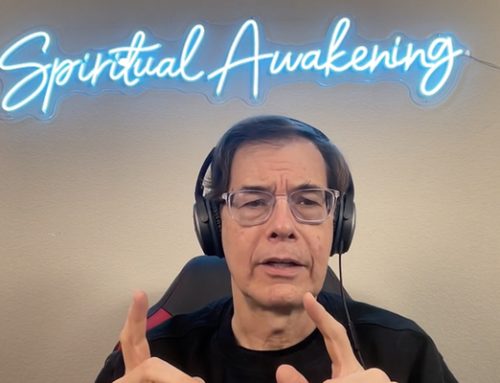Happy Wednesday to You!
I hope this day is an opportunity to create your dreams effectively.
I had a busy, productive day yesterday. Amidst the business, I got into the gym for a good deadlifting session.
Today I coupled sets 4 sets of 4 in the deadlift with reptilian crawling. I ended the day with a nice tai-chi session in my rock garden and then enjoyed a mindless action movie with Rory and some of Vidya’s lovely food.
Today we are offering my webinar on how to individualize your eating for optimal health and vitality via the CHEK Institute. If you would like to register to be on the webinar, you can do so at: https://www.chekinstitute.com/webinar/
The webinar is recorded, so if you can’t make the call, you can get the recording and gain some simple, effective tips for optimizing your eating plan.
PPS PRACTITIONER’S CALL
Just a reminder for all the PPS students that I have a coaching call tonight scheduled for you at 6:00 PM PST. Should be fun and interesting as always!
HOW TO HEAL FROM FUNGAL AND PARASITE INFECTIONS
My new DVD program on how to heal from fungal and parasite infections is well on the way in the editing stages now.
If you would like your free report on how to handle these challenges and be notified of the program release so you can get the early bird discount, feel free to go to and sign up for notification: https://www.chekinstitute.com/parasites/
CHEK TOTEM PART 5: HEARING AND BALANCE
OK, we are back into our series on the CHEK Totem Pole now after a successful Chek Level 4 class and a couple days of rest for Paul.
So far, we’ve covered the essentials of my 1-2-3-4 approach, which was symbolized atop of my artistic expression of the Chek Totem Pole (CTP).
Then we discussed breathing; we started with a dialogue on the origin of breathing as a quality of the Universe.
Then we looked into breathing as the most essential survival function, which all symbols on the CTP serve to support.
I have highlighted that the CTP is based on survival reflexes that are largely hardwired into your nervous system. I also suggested that every symbol on the CTP is subordinate to each symbol above with the acceptation of the limbic system, which is a floating symbol because we can choose to kill ourselves; to not breath in a body any longer.
Our last part of the series we discussed before I took a break to teach Chek Level 4 was on vision.
Today we are going to look briefly at the fourth symbol on my CTP, which addresses vestibular functions and hearing.
VESTIBULAR FUNCTION
The vestibular system includes the vestibular organ of the inner ear and a large neural network that connects all relevant information about head movement to the eyes, muscles, and the rest of the body.
The vestibular system is controlled by the eight cranial nerve and all cranial nerves communicate with each other via the central nervous system.
As you can see by the diagram above (B), the vestibular system is responsible for generating righting and equilibrium reflexes, which are an essential component of balancing your body in a gravitational field.
In section C., you can see that the vestibular system is also responsible for keeping your eyes focused on any visual target while your head moves.
The vestibular system is also important for maintaining binocular vision; keeping your eyes moving and seeing in parallel so you don’t get double images.
If you look on the bottom of the diagram in section C., you will see that the vestibular information also goes to postural muscles, making vestibular (balance) inputs/information essential to maintaining optimal posture.
When I (or any CHEK Level 3 or 4) perform a comprehensive assessment of body systems as a means of gathering the information necessary to restore optimal body-mind function, we always check the vestibular systems function because of its far-reaching effects on all body systems.
Though the vestibular system is quite robust in general, it can malfunction for reasons of disease.
Disease oriented vestibular function is quite uncommon compared to the myriad of other problems that can occur in a human body, but should always be ruled out before embarking on a healing journey whenever balance challenges are part of a patient’s symptom profile.
That said, there are some common diet and lifestyle factors that commonly lead to vestibular disorders.
DIET: Researchers have found that vestibular challenges (typically expressed as balance and coordination challenges) can and do result from both food intolerance and food allergies. (See Clinical Ecology by Lawrence Dickey, M.D.)
[amazon-product align=”left”]0398034095[/amazon-product]
I know this to be true because I’ve found a number of cases where cleaning up the diet and eating correctly for individual needs has improved or removed balance challenges that appeared to be symptoms of a vestibular pathology.
DEHYDRATION: Dehydration can reach the point that the fluid in the inner-ear doesn’t move correctly, causing confusing information to rise from the vestibular system into the brain. I have also seen cases of vestibular dysfunction that easily cleared once the patient was following the hydration advice I offer in my book, How To Eat, Move and Be Healthy!
HEARING/LISTENING
The eighth cranial nerve (Vestibulocochlear nerve) also carries hearing information from the ear to the brain for processing.
In my years of rehabilitating patients from many orthopedic disorders and diseases, I’ve found many chronic neck and back pain cases that were unresolved due to undiagnosed hearing loss in one ear.
When people work in job positions that require that they listen to people, machines, or otherwise, if both ears are not able to hear across the spectrum of sounds normal to the human ear, there is a tendency to turn the head so the most functional ear aligns with the source of sound they want to hear.
For example, if someone with partial hearing loss in their right ear works as a banker in the loan department, they will be talking to people most of their day. If they can’t hear them effectively with both ears, they will (usually unconsciously) turn their head so their most functional ear is aligned with the source of sound.
Over time, this chronic turning of the head can induce a functional scoliosis (S-curvature of the spine) and a wide variety of chronic musculoskeletal aches and pains.
Most commonly, I see hearing problems connected to neck pain from turning the head, and back pain from the associated turning of the spine to support the head over long periods.
LISTENING is the mental-emotional and spiritual function attributed to this symbol of the CTP. When people are having problems with hearing or balance (or any chronic problems with their body!), I often find that they are not listening to:
A. Themselves; they are choosing not to hear the messages from their inner and/or outer environments and are often confronted with pain (The PainTeacher).
When we don’t listen effectively to ourselves, we inevitably make the same mistakes over and over, opening the door to chronic ailments and diseases.
B. Key people in relationships. I find this element of listening most common in people that have been in relationships with each other for five or more years. Most of these challenges stem from not having clearly defined core values.
If we don’t have clearly defined core values, we can’t ever determine who we are, or are not compatible to in relationships.
If we are needy, fear abandonment, or are co-dependent for any dysfunctional reason, yet choose not to listen to the deeper messages being offered in relationships, we initially experience the pain of chaotic relationships.
If we keep playing this game, we develop selective hearing, which is often followed by numbness in our emotional body. Once we reach the state of numbness, we are typically in a state of denial as to our responsibility to ourselves with regard to creating our life the way we want it to be.
This occurs quite often when we expect others to create our dreams instead of doing our part.
I cover the topic of how to develop your unique core values set in PPS Success Mastery Lesson 1. How To Find and Live Your Legacy.
Even with well-established core values, one can still have listening problems when their ideology is too intellectual and potentially disconnected from the heart-feeling and listening nature of self or others.
The heart integrates the information (beliefs) from the head above, with the body below.
To the degree that one is unwilling to feel what they are creating in relationships with self or others, they are typically unwilling to “listen” to the “needs being expressed.”
Naturally, this will either lead to a broken relationship, or progressive separation of the spirit of those involved.
People in this situation often find themselves quaintly distracted by running from doctor to doctor in hopes of a diagnosis that fortifies their intellectual beliefs. The problem is that such approaches rarely ever work!
They do cost a lot of money and time though, making them a working strategy for those that choose to avoid listening, even though they are hearing.
BALANCING
The overarching theme of this section of the CTP is balancing the body-mind. Though the CTP has several seemingly separate symbols and functions, they are all functionally integrated.
The functionally integrated body-mind is a balanced body-mind. The concept of being functionally integrated and balanced as an essential component of creating and living your dreams effectively, and is woven throughout the entire CTP.
Just as we must both “see” and “have vision” to be balanced, we must also have physical balance as well as both “hear” and “listen” in life.
In Part 6., we will explore the upper cervical spine and how it relates to the CTP and life in general.
I hope you all have a beautiful day.
Don’t forget to listen to your inner and outer environments. As Einstein said, “Not everything that can be counted counts, and not everything that counts can be counted.”
This means that we often have to listen for the seemingly intangible. When we have enough intangibles being unaccounted for in our lives, or expect others to do our listening for us, we inevitably run into challenges that are often unwanted.
By listening with your heart, you can feel what is attached to your thoughts and beliefs. When our feelings are being numbed so we can maintain a belief(s) that may not be congruent with our highest good, we are often awoken from our slumber by pain.
If drugs are used to aid in the numbing process, disease and disaster in relationships serves to turn up the volume to the point that we begin to both hear, and listen more deeply.
Love and chi,
Paul Chek






